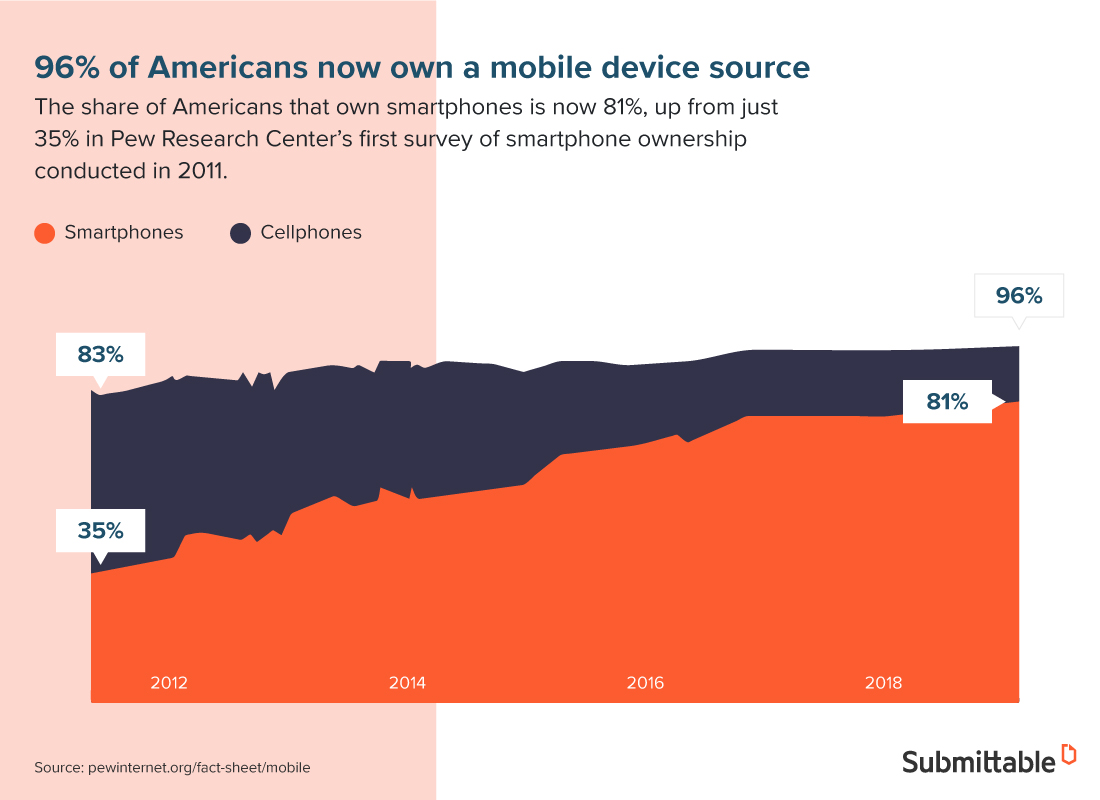It’s been almost 40 years since publishers first dipped their toes into the pond of online publishing. Today, “digital-first” and “digital-only” can feel like it’s taking over – but is print dead? On hiatus? Or is it ready to be part of the content revolution?
Over the past decade, publishers who initially resisted the idea of the internet as a new platform for the written word have started to accept that the publishing world they knew has changed irrevocably.
Since the introduction of digital technology, thousands of print publications of varying sizes and locations have shuttered. Assuming this comes as the result of digitization, however, would be wrong.

Digital technology’s vital role in today’s publishing industry
Digital may be what saves publishing, rather than the reverse. The idea of virtualized books, magazines and news is nothing new. As early as the mid-sixties, science fiction authors and producers envisioned a future in which printed books were collectible antiques, and accessible virtual versions existed on screen devices.
What many publishers fail to recognize in the continuing struggle for viability is that it isn’t an ‘either digital or print’ decision. Digital and print can work together to keep publications alive and strong, further expanding their readership and facilitating subscription growth. For this to happen, however, publishers must let go of firmly held traditional ideas and preconceptions regarding digital platforms.
Digital + print = best chances for success
Digital technology looms large on the publishing industry’s current and future landscape. The public’s adoption of convenient, portable, high tech devices capable of quickly downloading an entire library of books, magazines, or newspapers means that some publishers have embraced the market fully becoming ‘digital only.’ Others, still, prefer a blend of publishing approaches that may or may not include “digital first”.
This doesn’t mean there is no room for print publishers; not publishing digitally still leaves room for digitizing in other areas. Embracing digital tools internally, and in author facing areas such as the submissions process, can reduce publishing costs allowing print-preferring publications to stay competitive.

Adapting for digital and reaching new audiences
It isn’t enough to commission e-friendly versions of printed publications. The publishing process as a whole, from submissions to marketing to final publication, will need revamping to incorporate using digitized platforms for running internal systems including the submissions process, in addition to publishing.
Digitization may also be the only way to salvage centuries of publishing that might otherwise be lost. Scanning and saving pages from the world’s vast stores of published information provide access to ancient texts, thousands of newspapers, and millions of written articles that can still have an impact on today’s digital media readership.
Publishers need automation, too
Digital advertising has traditionally been tailored for brands and agencies, leaving many publishers out in the cold. All of that is changing, now that publishers recognize their need to shift focus. The digital advertising market must, in turn, provide publishers with better organizational, automation, and marketing tools.
Publishers who resist automation, viewing it as a ‘cheat’ or a ‘shortcut,’ deprive themselves of one of the most effective ways to cut costs while improving efficiency – both essential for most print publications to remain afloat. Understanding how to effectively utilize automation without compromising quality is a must.
Adapting to survive: embracing digital transformation in publishing
Publishers who accept and leverage digitized media can benefit in multiple ways, empowering each person involved with the publishing process. Digitizing and automating can change the game for publishers in areas such as:
Content storage
Collect previously siloed materials and repositories, including network drives, folders, and shared content in one place. Standardize format, update all versions to the most current iteration (say goodbye to WordPerfect files), and share documents and other materials to seamlessly between various departments.
Content agility
When publishers can readily access older content and repurpose it for republication, they can promptly fill any gaps in content modules. Publishers can now share older content – that appears fresh and new – across new digital platforms. Previously submitted but unpublished material is also readily accessible for review and updating as needed.
Content findability
Correct tagging, meticulous dating, and organized formatting can make searching for and accessing relevant content a breeze, no matter what time of the day or night. A commitment to findability is essential for ensuring users find relevant results in response to their internal searching. Automating the submission process is a great way to guarantee each piece of material uploaded meets filing and storage requirements necessary for later retrieval.
Content collaboration
Automated collaboration speeds the review and editing processes, allowing people in various locations to work together on a document in real-time. The streamlining of workflows provides for faster preparation of content for publication.
Content distribution
The best outcome for publishers is when content can be disseminated rapidly, widely, and for maximum effect & longevity. Print publications may traditionally provide for lasting impact, but digital publication will take engagement to the next level.
Content customization
Centralized publishing platforms also allow for publishers to develop and review alternate versions of both the publication and marketing campaigns for simultaneous release across different platforms – both print and digital. Create interactive content to drive interest in long-form pieces or subscription-based materials.
Content engagement
It’s not just about impressions or “eyes on,” but the ability of digital platforms like social media sites to put published work in front of audiences eager for peer-recommended material. What begins as a social media post quickly leads to an online review or short-form version of the content, culminating in a new book order or magazine subscription.
Potential strategic pathways for publishers
Many publishers are embracing digital, at least on the customer-facing front – but other avenues exist that can aid in cutting costs while better serving both their authors and their readers. On the customer front, new opportunities to increase revenue are available in the realm of audio and mobile. On the submissions side, platforms that allow a streamlining of the process can reduce costs.
Whether or not you maintain a print publication or pivot wholly into the world of online and e-publishing, here are some ways you can drive your publication forward.

Go mobile and embrace audio
Content is continually redefining itself, particularly as people spend more and more time on mobile devices. Don’t allow the “dwindling attention span” myth distract you; people still want to read long-form content. It’s all about presentation.
Is your content easily read on a mobile device? If not, adapting your content for comfortable on-the-go reading is an advantage over non-mobile friendly publications.
Audio content is now the largest growing segment of the digital publishing industry, with podcasts and audiobooks getting a sizable chunk of the average individual’s time spent on their devices. Traditional readers are making the shift to mobile content consumption, and your publication must adapt.
Centralize and automate operations
Use centralized platforms for submissions and publishing processes as well as for discovery and engagement, providing ways for authors, editors, and readers to connect and share feedback and insights. Support for brand development can also be initiated through such platforms, teaching content creators how to grow audiences and maximize reach. By leveraging the latest technology tools and services, you can smooth the way for rapid, high-quality content creation and publication.
Technology doesn’t have to disrupt publishers. Instead, it can be leveraged to create and deliver content in innovative, practical ways. Find out how Submittable can take your publication into the future with confidence.
